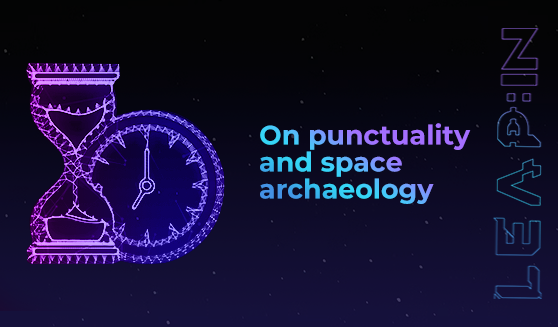
On punctuality and space archaeology

As the end of the year draws near, we’re looking ahead to #LEAP23. Dive in for exclusive insights from the next LEAP keynote speakers – they’ve got a lot to say.
This week we’re quoting…
William Bao Bean (General Partner at SOSV and Managing Director of Orbit Startups)
What Bao Bean said:
“One of the biggest challenges that I have encountered is timing. Often it’s quite clear that a problem exists, but the challenge is to make sure the technology or the solution is actually ready, or will be ready soon, to solve that challenge.”
Key question: is the timing right for your idea?
This brings up an important question that all entrepreneurs need to ask themselves before investing all their energy and resources into an idea.
Is now the right time?
You can see a problem that needs to be solved. But that’s only one piece of the puzzle – if you try to solve the problem prematurely, you risk coming up against insurmountable challenges.
Such as…
When Elizebeth Holmes launched Theranos, an advanced portable blood testing product that relied on technology that…just didn’t exist. Holmes issued false statements to investors, and staged fake demonstrations of the medical testing device, to win their investments – and it worked (for a while).
Theranos raised over USD $700 million from private investors and VCs. The company’s valuation reached $10 billion in 2014.
But now (at time of writing) Holmes is just about to be sentenced for fraud. It’s unclear whether her intentions were good or not – but her idea was definitely ahead of its time. She raised millions in investments for a product that just wasn’t scientifically feasible yet.
OK, that was extreme
Most founders won’t lie and cheat their way to their dramatic downfall.
But they might bang their heads against a brick wall for years if they’re too far ahead of their time.
AskJeeves, for example, was the pre-Google search engine that gained real traction for…a year or two. You could type in a question and Jeeves would answer. But the tech just wasn’t good enough yet, and in spite of having many of the ingredients for modern search engine success, people quickly stopped asking Jeeves.
The moral of the story is that a solution isn’t enough all by itself. You’ve also got to know that there’s a viable way of providing that solution – or you’ve got to have the skills, network, and patience to be the one who develops the tech to do it.
Read the interview: What makes a startup investible?
This week we’re also quoting…
Lawrence Eta (Executive of Digital and Analytics Program Expert at the Royal Commission of Alula)
What Eta said:
“…a living museum without barriers, protecting heritage and culture for generations and embedding nature.”
We took it out of context
Clearly, we’ve taken Eta’s words out of context here – so let us put them back in context for you. He was talking about how digital tech and smart solutions can enable the preservation of historic sites, while simultaneously elevating those sites into incredible destinations for tourists and international researchers.
It got us thinking about the convergence of tech and archaeology more broadly.
Because archaeologists have a reputation for focusing on the past, while technologists are known for looking to the future – but that’s not always true.
Enter: space archaeology
We haven’t been hanging out in space long enough to have an archeological history to uncover, surely? Perhaps not.
But that’s not actually what space archaeology is. Instead, space archaeologists (like Sarah Parcak) use space-based tech to look down at the Earth and discover ancient sites that we haven’t been able to find from a ground-based viewpoint.
Being in space gives our species a unique vantage point – quite literally.
What have scientists found via space?
From space, archaeologists have used satellites to find…
- An incredible 3,100 settlements, 17 pyramids, and 1000 lost tombs across Egypt
- The lost of city of Iram/Ubar, in Oman
- The location of the lost city of Tanis (which was featured in the film Raiders of the Lost Ark)
- Ancient drains and evidence of slash-and-burn agricultural practices that have helped archaeologists understand what the final days of the Mayan civilisation might’ve been like
- Where and how the Moai (those iconic statues on Easter Island) were moved
- A previously undiscovered section of Angkor, the famous ancient city in Cambodia
…and more.
Tech and history: protecting human heritage
What we’re getting at here is that people who are fascinated by the past shouldn’t be afraid of modern tech. And people who love modern tech shouldn’t reject the past.
By bringing the two together, we can understand and protect the heritage of communities around the world, and of human beings in general. And we can make our collective history accessible, interactive, and a joy to discover.
Read the blog: How smart tech can turn a heritage site into a living museum
